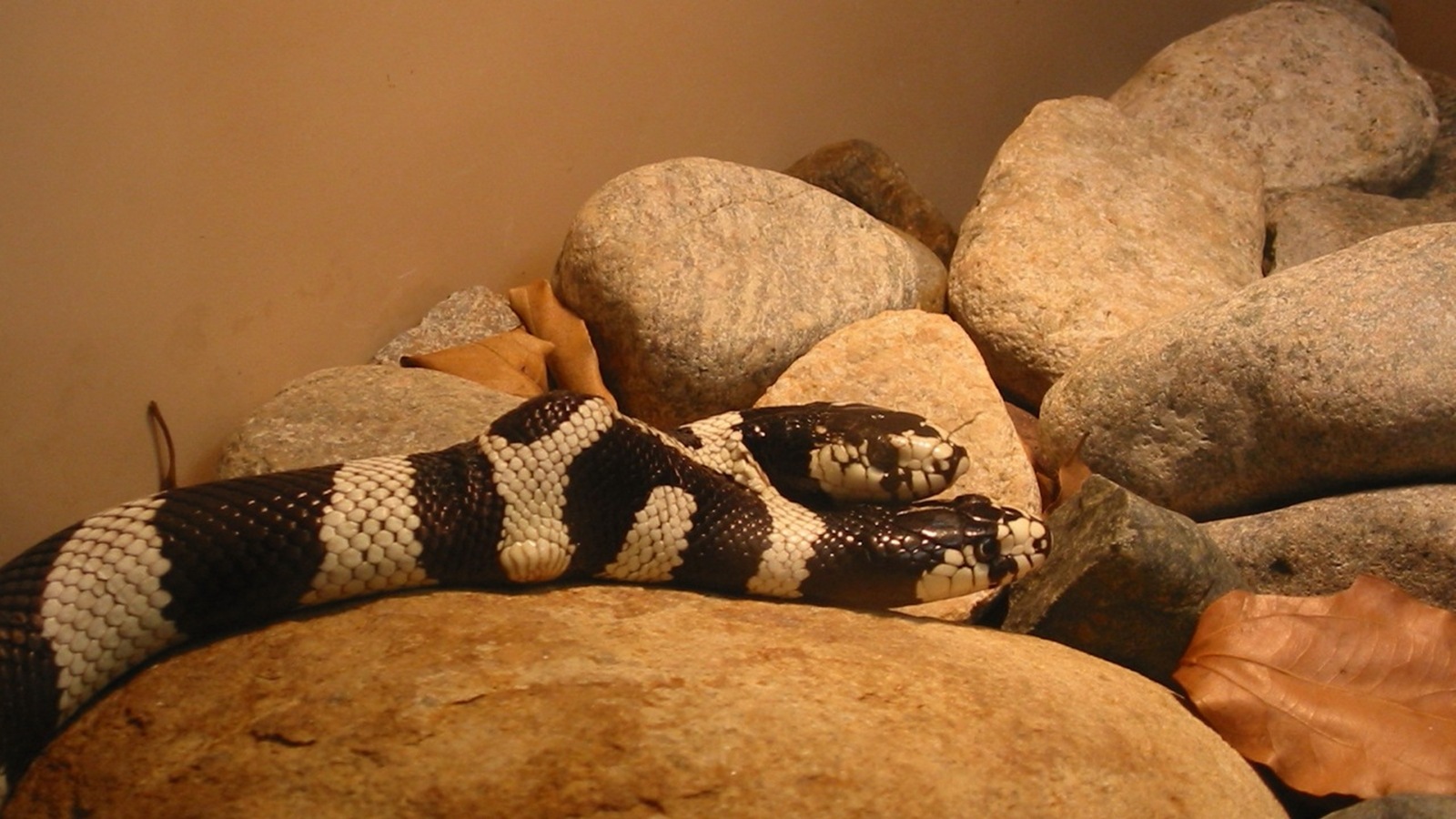📣 For more lifestyle news, click here to join our WhatsApp Channel and also follow us on Instagram
Meet the Jesus Christ lizard that walks on water (and other fascinating reptiles around the world)
What makes these reptiles so unforgettable isn’t just how they look, it’s how they’ve adapted.
 Discover the most fascinating reptiles in the world, from lizards that walk on water to two-headed snakes (Source: Wikimedia Commons)
Discover the most fascinating reptiles in the world, from lizards that walk on water to two-headed snakes (Source: Wikimedia Commons)Reptiles are often misunderstood, relegated to the eerie. But, delve deeper and you’ll find creatures so bizarre, so unexpectedly brilliant, they feel pulled straight from a fantasy novel.
From lizards that run across water to turtles that impersonate leaves, nature’s creativity knows no bounds. Let’s meet some of the most captivating reptiles in the world.
1. The Basilisk
It sounds like folklore, but this lizard really does run on water. Found in Central America, the Basiliscus basiliscus, commonly known as the Jesus Christ lizard, uses sheer speed and body mechanics to dart across river surfaces.
As National Geographic explains, they accomplish the seemingly miraculous act of moving on top of water by generating forces with their feet that keep their bodies both above the surface and upright.
The trick lies in their hind feet, which slap the water hard enough to create pockets of air that prevent sinking—long enough, at least, to escape predators like birds and snakes.
2. Bicephalic snakes
Two-headed snakes have long inspired mythologies, but in real life, they’re the result of a rare developmental anomaly called bicephaly. Just like conjoined twins in humans, these snakes are born when a single embryo tries—but fails—to fully split into identical twins.
The result is two brains often working against each other. While fascinating to observe, these animals rarely survive long in the wild. Their instincts don’t always align; one head might sense prey, the other might retreat, making survival complicated in nature’s harsh logic.
3. Draco volans
High in the canopy of Southeast Asian forests lives a lizard that glides between trees like a miniature dragon. The Draco lizard has wing-like flaps that unfurl from elongated ribs, allowing it to soar across jungle gaps.
According to BBC Earth, Draco lizards have the amazing ability to fly from tree to tree in search of food, a mate or to avoid predators.
They don’t fly like birds but rather glide with elegance, steering mid-air with their tails. Their graceful aerial moves have even earned them a place in folklore across Asia, where they’re thought to bring luck—or fear.
 Two-headed snakes have long inspired mythologies, but in real life, they’re the result of a rare developmental anomaly called bicephaly. (Source: Wikimedia Commons)
Two-headed snakes have long inspired mythologies, but in real life, they’re the result of a rare developmental anomaly called bicephaly. (Source: Wikimedia Commons)
4. Thorny devil
Looking like something straight out of Mad Max, the thorny devil (Moloch horridus) is covered in spikes, right down to a false head on the back of its neck to mislead predators. But perhaps its most fascinating trait is invisible to the eye.
As Australian Geographic shares, “tiny grooves that suck up dew… passing it to the devil’s mouth without the lizard having to lift a finger.”
That’s right, this desert dweller drinks through its skin. Morning dew collects on its body, gets absorbed into the grooves, and travels by capillary action right into the mouth. Who needs a water bottle when your skin does the job?
5. The Mata Mata turtle
The Mata Mata turtle (Chelus fimbriata) from the Amazon basin doesn’t bother chasing prey. It doesn’t have to. With a face like a pile of leaves and a shell like mossy bark, this turtle lies motionless in the murky waters of the rainforest, blending perfectly into its surroundings.
With a barklike shell and a head shaped like a leaf, the mata mata turtle is a master of camouflage. When an unsuspecting fish wanders too close, the turtle simply opens its cavernous mouth and sucks it in, no chase, no fight, just stealth and vacuum power.
6. The Tokay gecko
The Tokay gecko (Gekko gecko) isn’t your average wall-crawler. Found across Southeast Asia, this gecko is brilliantly blue-grey with fiery orange spots—and it doesn’t hesitate to voice its opinions.
Known for its vocalizations that sound like ‘To‑kay! To‑kay!’, the gecko has reputation for being aggressive and territorial, especially males.
These geckos are fiercely territorial, and while they may be beautiful, they’re not afraid to use their powerful jaws. Still, their call and striking appearance make them one of the most charismatic reptiles in the pet trade (for experienced handlers only).
📣 For more lifestyle news, click here to join our WhatsApp Channel and also follow us on Instagram






- 01
- 02
- 03
- 04
- 05





















